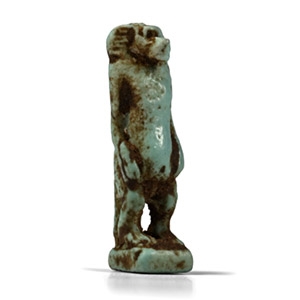Home > Auctions > 4 - 9 March 2025
Ancient Art, Antiquities, Books, Natural History & Coins
Acquired on the UK art market.
Property of an East Sussex collector.
This lot is accompanied by an illustrated lot declaration signed by the Head of the Antiquities Department, Dr Raffaele D’Amato.
Acquired on the UK art market.
Property of an East Sussex collector.
This lot has been checked against the Interpol Database of stolen works of art and is accompanied by a search certificate number no.12555-231633.
This lot has been cleared against the Art Loss Register database, and is accompanied by an illustrated lot declaration signed by the Head of the Antiquities Department, Dr Raffaele D’Amato.
This maker's mark is not listed in the standard works, e.g. Jackson, Sir C.J., English Goldsmiths and Their Marks, London, 1921.
with Herbelin Auction, 3 April 2024, no.110.
This lot has been checked against the Interpol Database of stolen works of art and is accompanied by a search certificate number no.12556-230729.
This lot has been cleared against the Art Loss Register database, and is accompanied by an illustrated lot declaration signed by the Head of the Antiquities Department, Dr Raffaele D’Amato.
Property of a County Durham collector; acquired on the UK art market.
This lot is accompanied by an illustrated lot declaration signed by the Head of the Antiquities Department, Dr Raffaele D’Amato.
Property of a County Durham collector; acquired on the UK art market.
This lot is accompanied by an illustrated lot declaration signed by the Head of the Antiquities Department, Dr Raffaele D’Amato.
Acquired on the UK art market.
Ex Property of a County Durham collector.
This lot has been checked against the Interpol Database of stolen works of art and is accompanied by search certificate no.12490-230251.
This lot has been cleared against the Art Loss Register database, and is accompanied by an illustrated lot declaration signed by the Head of the Antiquities Department, Dr Raffaele D’Amato.
There is no officially mandated design for 32nd degree Scottish Rite rings beyond the double-headed eagle, hence they can vary greatly in appearance. Common symbols include the number 32, triangles, the Hebrew letter yod (as in this example), and the square and compasses. Since the 32nd degree ring is a reflection of its owner's Masonic journey, the rings can sometimes also contain symbols from other Masonic orders.
Acquired on the UK art market.
Ex property of a County Durham collector.
This lot has been checked against the Interpol Database of stolen works of art and is accompanied by search certificate no.12489-230248.
This lot has been cleared against the Art Loss Register database, and is accompanied by an illustrated lot declaration signed by the Head of the Antiquities Department, Dr Raffaele D’Amato.
MIDDLE JURASSIC PERIOD, AALENIAN STAGE, 174.1-170.3 MILLION YEARS B.P.
with Science & Natural History, South Kensington, 27 April 2017, no.13.
with Science & Natural History, South Kensington, 27 April 2017, no.27.
From a Lincolnshire, UK, collection, 1990s.
Property of a Cambridgeshire gentleman.
Dinosaur eggs are known from about 200 sites around the world, the majority in Asia and mostly in terrestrial (non-marine) rocks of the Cretaceous Period. It may be that thick calcite eggshells evolved during the Cretaceous (145 to 65 million years ago). Most dinosaur eggs have one of two forms of eggshell that are distinct from the shells of related modern animal groups, such as turtles or birds; however, some eggs closely resemble the type of shells seen in present day ostrich eggs.
From a Lincolnshire, UK, collection.
Property of a Cambridgeshire gentleman.
This lot has been checked against the Interpol Database of stolen works of art and is accompanied by search certificate no.12491-230295.
The Mosasaur is an extinct, large marine reptile dinosaur with an elongated body, long snout and paddle-like limbs. Found worldwide, they competed with other well-known sea predators of the Late Cretaceous, such as plesiosaurs and ichthyosaurs, for food, existing primarily on a diet of ammonoids, cuttlefish and fish.
From a private collection acquired by the previous owner's father in the 1950s.
Ex TimesAncient, Bristol, UK.
Accompanied by a copy of a previous catalogue entry.
This lot is accompanied by an illustrated lot declaration signed by the Head of the Antiquities Department, Dr Raffaele D’Amato.
Cf. Andrews, C., Amulets of Ancient Egypt, London, 1994, fig. 71c, for similar.
Amulets featuring the vervet monkey were believed to serve as magical sexual aids for the living and the dead, ensuring these benefits in life and the afterlife.
253 - 264 of 3546 LOTS

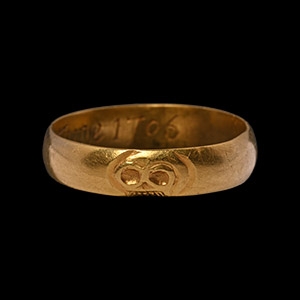

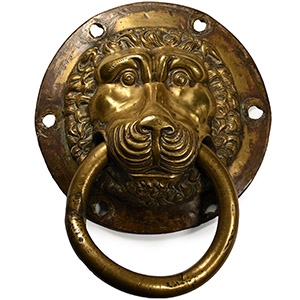




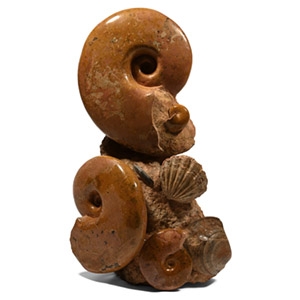
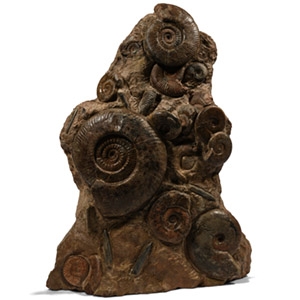
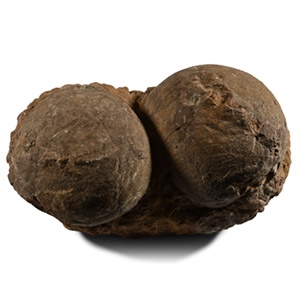
.jpg)
